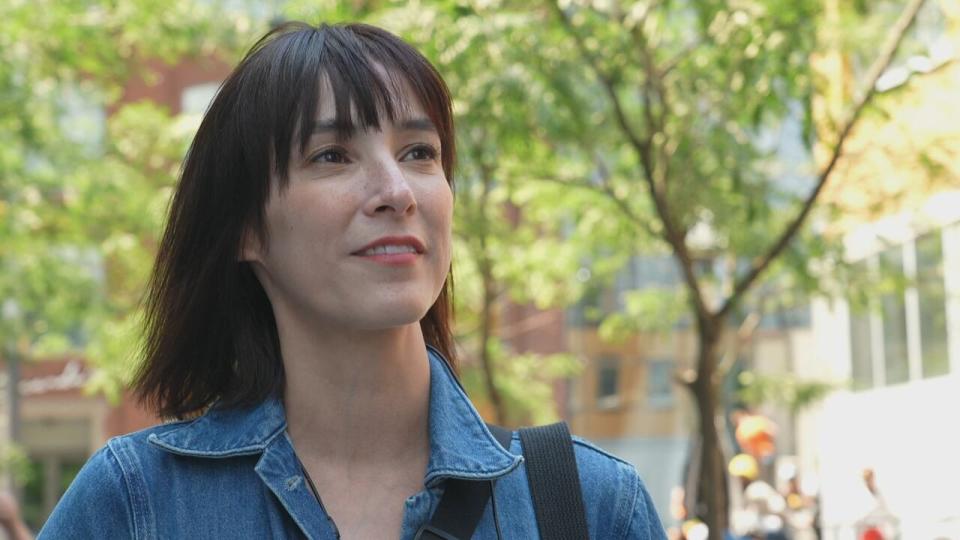City crews spent hours on Friday clearing an encampment in Allan Gardens in downtown Toronto but an advocate says the action left at least two people with nowhere to go.
Crews began work on Friday morning in the park near Carlton and Jarvis streets. Heavy machinery removed a large wooden structure piece by piece. Toronto police officers were on hand but kept their distance.
As of 6 p.m., one large structure on the east side of the park and one large tent were still standing. Teepees near a sacred fire were left alone. There were also some belongings still in the park.
Cleanup is underway to remove debris from the park, part of which is now behind yellow caution tape.
At the start of Friday, there were 11 unhoused people in the park. Nine have been moved into shelters and two were holding out.
Elise von Scheel, a City of Toronto spokesperson, told CBC News the city has been trying to move people out of the park for the past 450 days through what it calls its “enhanced outreach model.”
The city adopted the model after Toronto’s ombudsman investigated encampment clearings of three parks during the pandemic and recommended the city improve its response.
Von Scheel said the city moved more than 400 people into indoor spaces over the last 18 months: 300 have gone into shelters while 100 have been housed.
“The work that you are seeing going on behind us here is just to do some of the cleanup now that they are accepting referrals or moving on from park,” von Scheel said.
She said the city needs to take its resources from the park to other parks.

City crews worked to clear Allan Gardens of an encampment on Friday. Toronto police officers were on hand but kept their distance. (CBC)
Unhoused people will be prevented from setting up tents there again through an encampment prevention protocol, she said.
“When people try to come and establish themselves in the park, they’re referred into an indoor space that is set aside to help prevent new encampments,” she said. “That’s been in place at Allan Gardens, which is in part why you see it hasn’t grown much in the last year that we’ve been able to increase things here.”
“That will continue to be in place,” she said.
Von Scheel said there have been a large number of tents in Allan Gardens for some time, and was an “encampment community” last summer with 90 structures and about 60 people living there.
‘No one is receiving housing,’ advocate says
But community worker Diana Chan McNally said on Friday on X the only solution to the problem of homelessness is housing, and clearing achieves nothing.
“No one is receiving housing. Seven people have accepted shelter beds. Two will simply be displaced to nowhere. I can’t stress this enough: in no way has homelessness been ‘solved’ by this action,” Chan McNally said in the post.


Community worker Diana Chan McNally says, ‘I can’t stress this enough: in no way has homelessness been ‘solved’ by this action.’ (Paul Borkwood/CBC)
“The narrative of moving people into ‘safer, indoor space’ is just spin,” she said.
“Shelters are not objectively safer, and people avoid them for legitimate reasons: to preserve their autonomy, and because of oppressive rules, violence, theft, death, and disease. A shelter bed is not a home,” she added.
“Moreover, the retention rates of encampment residents moved into shelter are abysmal: the majority return to the street. Why isn’t this addressed? The end result of clearing is that people are disrupted, traumatized, and dispersed to another park, only to become targets again.”
Chan McNally said encampment residents have rights.
“We continue to violate them because we refuse to consider housing as more than a commodity, or recognize that people who lack property and assets are actually people. Stop the clearings. Create the resources.”
Over 10,000 unhoused people live in Toronto
City workers will be in the park for the next 30 days to tell people that the city no longer allows tents at the park and to provide a phone number to access shelter space.
According to the city’s own data, a total of 10,339 people in Toronto were actively homeless in the last three months, while a total of 9,599 people used its shelter system on Thursday night. As well, an average of 223 people a night were turned away from the shelter system in September.

